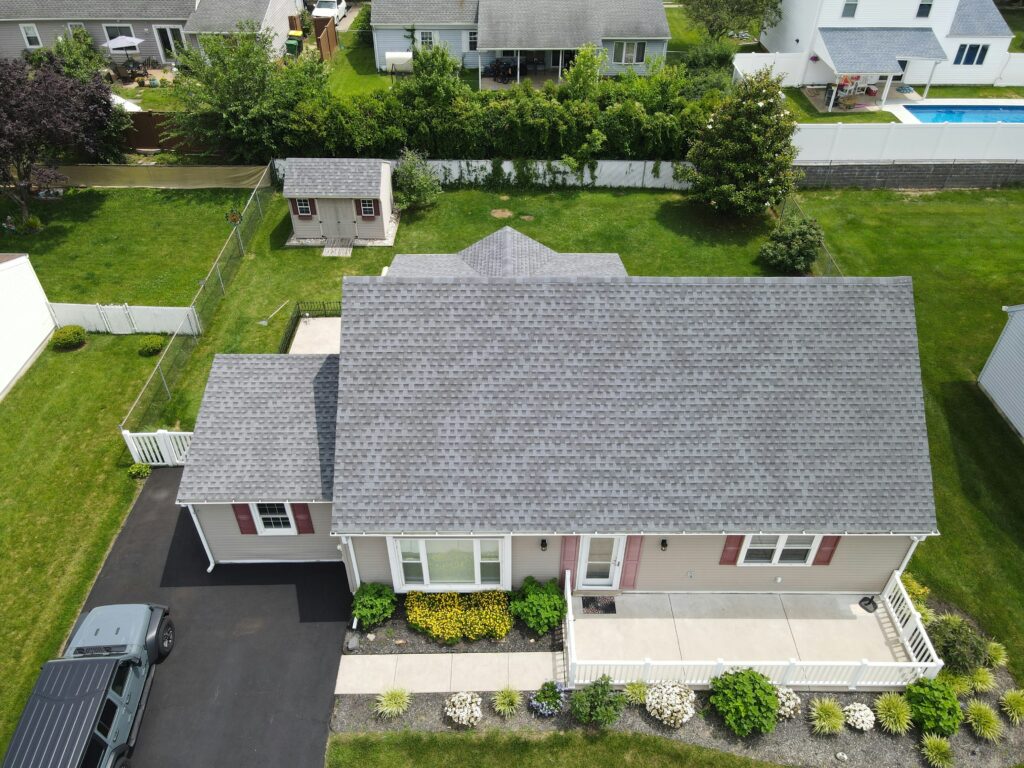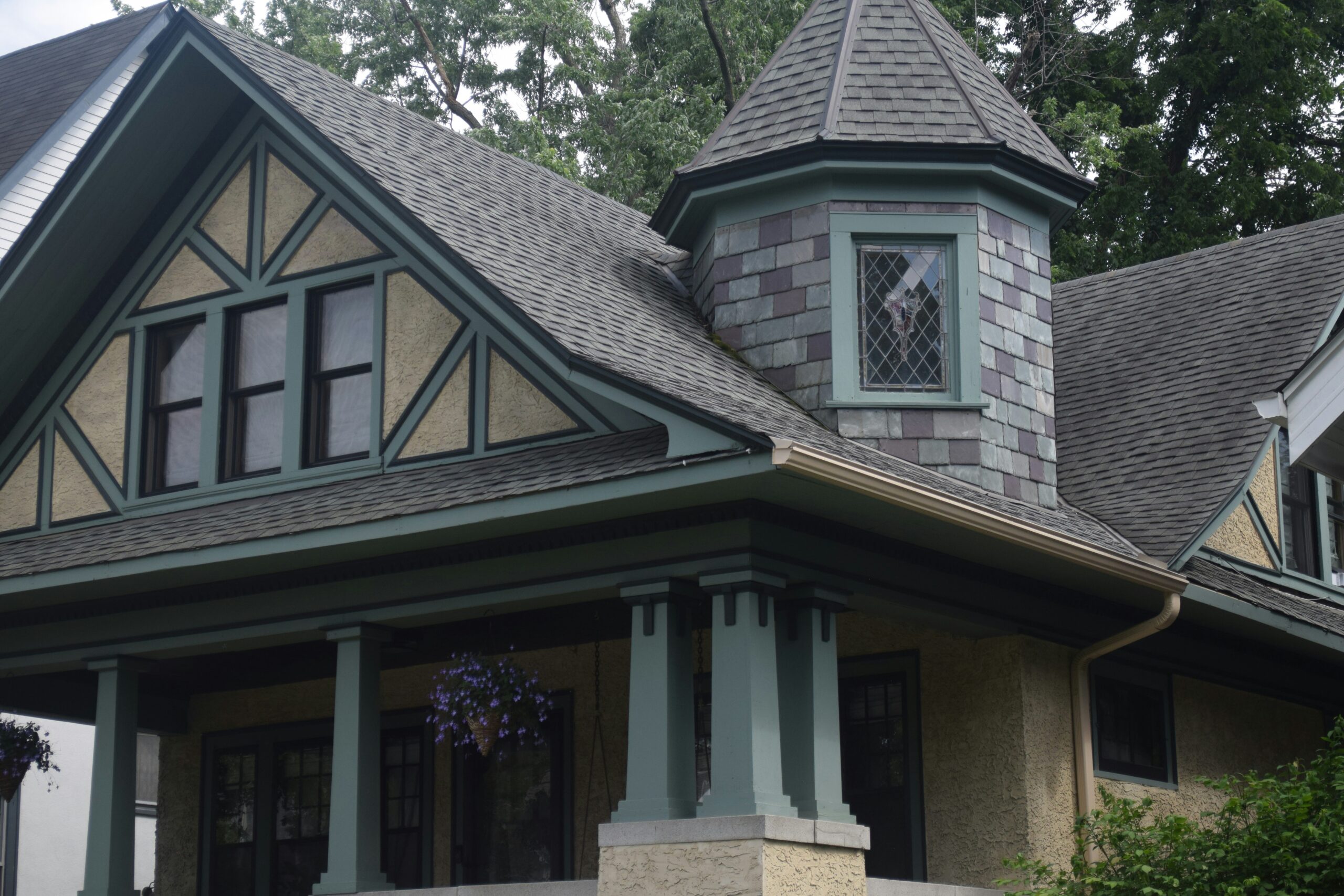Roof Maintenance 101: When to Repair vs. Replace
Few parts of your home work harder than your roof. It shields you from the elements, insulates against heat and cold, and plays a major role in keeping your home structurally sound.
Yet despite its importance, many homeowners overlook regular home maintenance for their roofs—often until it’s too late.
The question many face at that point is: should you repair or replace your roof?
Making the right decision can save you thousands of dollars and prevent further damage to your home.
In this guide, we’ll break down how to assess your roof’s condition, when repairs make sense, and when a full replacement is the smarter investment.
Why Roof Maintenance Matters
As part of your home maintenance routine, inspecting and caring for your roof is crucial. Over time, exposure to sun, rain, wind, and debris can wear down even the highest-quality materials. Regular maintenance helps you catch minor issues before they turn into major problems—like leaks, mold growth, or structural damage.
Think of roof maintenance as insurance for your biggest investment. Spending a little time and money each year can add years to your roof’s lifespan and help you avoid emergency repairs that are often far more expensive.
Common Signs Your Roof Needs Attention
Before you can decide whether to repair or replace your roof, you need to recognize the signs of damage. Not all wear and tear requires immediate replacement, but ignoring the early warning signals can lead to bigger issues down the road.
Look for These Signs of Roof Damage
- Missing or damaged shingles: Wind and weather can loosen or break shingles, exposing the underlying layers to water damage.
- Curling or cracked shingles: Aging or heat exposure can cause shingles to warp, reducing their ability to shed water effectively.
- Leaks or water stains: Spots on ceilings or walls often indicate water intrusion from above.
- Granules in gutters: Asphalt shingles shed granules as they wear out, a sign that your roof’s protective coating is deteriorating.
- Sagging rooflines: This can signal structural issues that require immediate professional attention.
- Sunlight in the attic: If you can see daylight through the roof boards, it’s a clear sign of gaps or damage.
Catch these issues early, and you might only need localized repairs. But if they’ve been ongoing for years, your roof may be reaching the end of its life.

When Roof Repairs Are Enough
In many cases, minor damage can be resolved with timely repairs, saving you from the expense of a full roof replacement. If the rest of your roof is in good shape, localized fixes can extend its lifespan significantly.
Situations Where Repair Makes Sense
- Limited damage: If only a few shingles or a small section are damaged, patching or replacing those areas can restore functionality.
- Recent installation: Roofs less than 10 years old typically don’t need full replacement unless the damage is severe.
- Minor leaks: If leaks are isolated and caused by flashing or sealant failure, simple repairs often suffice.
- Budget constraints: If funds are tight, a professional repair can buy you more time before a full replacement.
However, even small repairs should be done promptly. Neglecting them allows moisture to penetrate deeper, leading to rot, mold, and interior damage that’s much costlier to fix later.
When It’s Time to Replace Your Roof
Sometimes, patching up problem areas just won’t cut it. Roof replacement becomes necessary when the structure or materials have deteriorated beyond repair. While it’s a larger investment upfront, replacement often saves money long-term by preventing recurring repair costs and energy inefficiency.
Signs You Need a Roof Replacement
- Age of the roof: Most asphalt roofs last 20–25 years. If yours is approaching or past that range, it’s likely time for replacement.
- Widespread damage: When damage covers more than 30% of your roof, replacement is usually more cost-effective.
- Persistent leaks: Multiple or recurring leaks suggest underlying issues that simple patching can’t solve.
- Visible sagging: A sagging roofline indicates possible structural failure that requires full reconstruction.
- Rising energy bills: Poor insulation or damaged roofing materials can lead to heat loss, making your HVAC system work harder.
If you’re unsure whether you need a replacement, schedule a professional roof inspection. An expert can assess the damage and recommend the best course of action for your situation.
Types of Roofing Materials and Their Lifespans
Understanding your roof’s material can help you anticipate maintenance needs and plan for eventual replacement. Different roofing materials have different lifespans and maintenance requirements.
Common Roofing Materials
- Asphalt shingles: The most common and affordable option, lasting 20–25 years with regular maintenance.
- Metal roofing: Durable and energy-efficient, with a lifespan of 40–70 years.
- Clay or concrete tiles: Excellent for hot climates and can last up to 50 years or more, though they’re heavy and may require reinforced framing.
- Wood shakes or shingles: Provide a natural look but need more frequent maintenance; typically last 20–30 years.
- Slate roofing: Extremely durable and beautiful, lasting 75–100 years, though it’s one of the most expensive options.
Regular home maintenance can extend any roof’s lifespan, but it’s especially important to match your care routine to the material type.
For instance, metal roofs may only need occasional cleaning, while wood shingles require regular sealing to prevent rot.

How Regular Roof Maintenance Prevents Bigger Problems
Proactive roof maintenance is one of the smartest ways to avoid unexpected repair costs. You don’t have to climb onto your roof every month, but seasonal inspections and basic upkeep make a huge difference in performance and longevity.
Simple Roof Maintenance Tips
- Inspect after major storms: Look for loose or missing shingles, debris buildup, and signs of water pooling.
- Clean gutters regularly: Clogged gutters can cause water to back up under shingles, leading to leaks and rot.
- Trim overhanging branches: Falling branches and excess shade can both damage roofing materials and promote moss growth.
- Check attic ventilation: Poor ventilation traps heat and moisture, which can shorten the life of your roof.
- Schedule professional inspections: A roofer can spot subtle signs of wear and tear that homeowners might miss.
By making these steps part of your home maintenance plan, you’ll catch issues early and extend the life of your roof by years.
Weighing the Costs: Repair vs. Replacement
When deciding between repair and replacement, it’s important to think beyond immediate costs. A repair might be cheaper today, but if your roof is nearing the end of its lifespan, those temporary fixes could end up costing more over time.
Consider These Factors
- Extent of damage: Minor, localized problems often justify repair. Widespread or structural issues usually call for replacement.
- Roof age: If your roof is relatively new, repairing it makes sense. But if it’s nearing its expected lifespan, replacement offers better long-term value.
- Energy efficiency: A new roof with modern materials can significantly reduce your energy costs, helping offset the initial expense.
- Future plans: If you plan to sell your home soon, a new roof can boost resale value and attract buyers.
In many cases, consulting with a roofing professional is the best way to make an informed decision. They can provide cost comparisons and help you understand what’s most beneficial for your specific situation.

Stay Ahead with Smart Roof Maintenance
Your roof is your home’s first line of defense, and caring for it is a vital part of responsible home maintenance. By staying vigilant, addressing small issues promptly, and knowing when to repair versus replace, you can protect your home’s integrity and avoid costly surprises down the line.
Whether you’re patching a few shingles or planning a full roof replacement, remember—timely action always pays off. Schedule a professional inspection today to assess your roof’s condition and ensure your home stays safe, dry, and efficient for years to come.
Maintaining your roof is only one item in a never-ending checklist of protecting your home. Learn about more home maintenance tasks you can’t afford to overlook.







